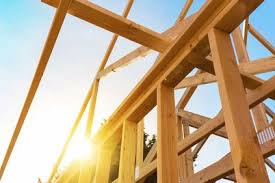Prefab Trusses: The Smart Solution for Stronger, Faster, and More Efficient Construction

In modern construction, efficiency and precision are just as important as strength and stability. One of the innovations that has transformed how builders approach roof and floor framing is prefabricated trusses , commonly known as prefab trusses . These structural frameworks are pre-engineered and manufactured off-site, then delivered ready for installation. By replacing traditional on-site framing, prefab trusses save time, reduce labor costs, and ensure a level of quality control that is difficult to achieve otherwise. What Are Prefab Trusses? Prefab trusses are pre-assembled structural frameworks designed to support roofs or floors in residential, commercial, and industrial buildings. They consist of wood or metal members connected in triangular units to distribute loads efficiently. Because they are manufactured in controlled environments, prefab trusses are built with precise engineering standards that meet or exceed local building codes. These trusses are commonly made...



